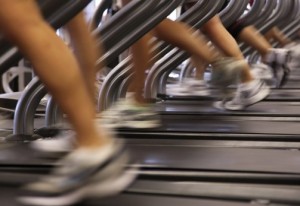
More evidence that low-calorie sweeteners are bad for your health
Studies show that artificial sweeteners can raise the risk of hypertension, metabolic syndrome, type 2 diabetes and heart disease, including stroke.

Natural Health News — Going to the gym to get healthy? You might want to read this first.
Whether you are breathing hard in a spinning class or taking a deep cleansing breath during yoga, a new study has given us all pause to consider the indoor air quality at the local gym.
Researchers from the University of Lisbon in Portugal and the Technical University of Delft in the Netherlands placed air-quality monitors in the weight room of 11 gyms, as well as several of the gyms’ exercise and yoga studios. The monitors measured the levels of carbon monoxide (CO), carbon dioxide (CO2), dust particles and chemicals like formaldehyde (CH2O).
Results revealed concerning levels of indoor air pollutants such as dust, formaldehyde and carbon dioxide, which can lead to asthma and other respiratory problems. The concentrations of these substances generally exceeded most accepted standards for indoor air quality.
Of these the most surprising were the high levels of carbon dioxide (CO2).
These, say the researchers, were so high precisely because of all that healthy exercising going on especially in confined spaces like aerobics studios.
Elevated levels of carbon dioxide can also indicate a poorly ventilated building, especially if they remain inflated for hours, as they did in this study.
CO2 on its own can cause fatigue, light-headedness, and foggy thinking but working out magnifies the detrimental effects, says Carla Ramos, the lead author of the study published in the journal Building and Environment.
“When we exercise, we take in more air with each breath and most of that air goes through the mouth, bypassing the natural filtration system in the nostrils. The pollutants go deeper into the lungs compared to resting situations.”
Overall, said Ramos, “We consider that the gymnasiums meet the criteria for a poor indoor quality.” A conclusion that some previous studies have reached as well.
If you are concerned about your local gym, follow your nose. If the air at your fitness centre smells stale and chemical-laden, tell the manager, Ms. Ramos advised. Ask about ventilation and if the building has undergone a recent indoor-air-quality assessment.
Inquire, too, about the types of cleaning products used at the gym and whether floors are swept or mopped; the latter is better at reducing airborne dust, she adds.
You might also want to consider greening your gym routing by taking your workout outdoors.

Please subscribe me to your newsletter mailing list. I have read the
privacy statement